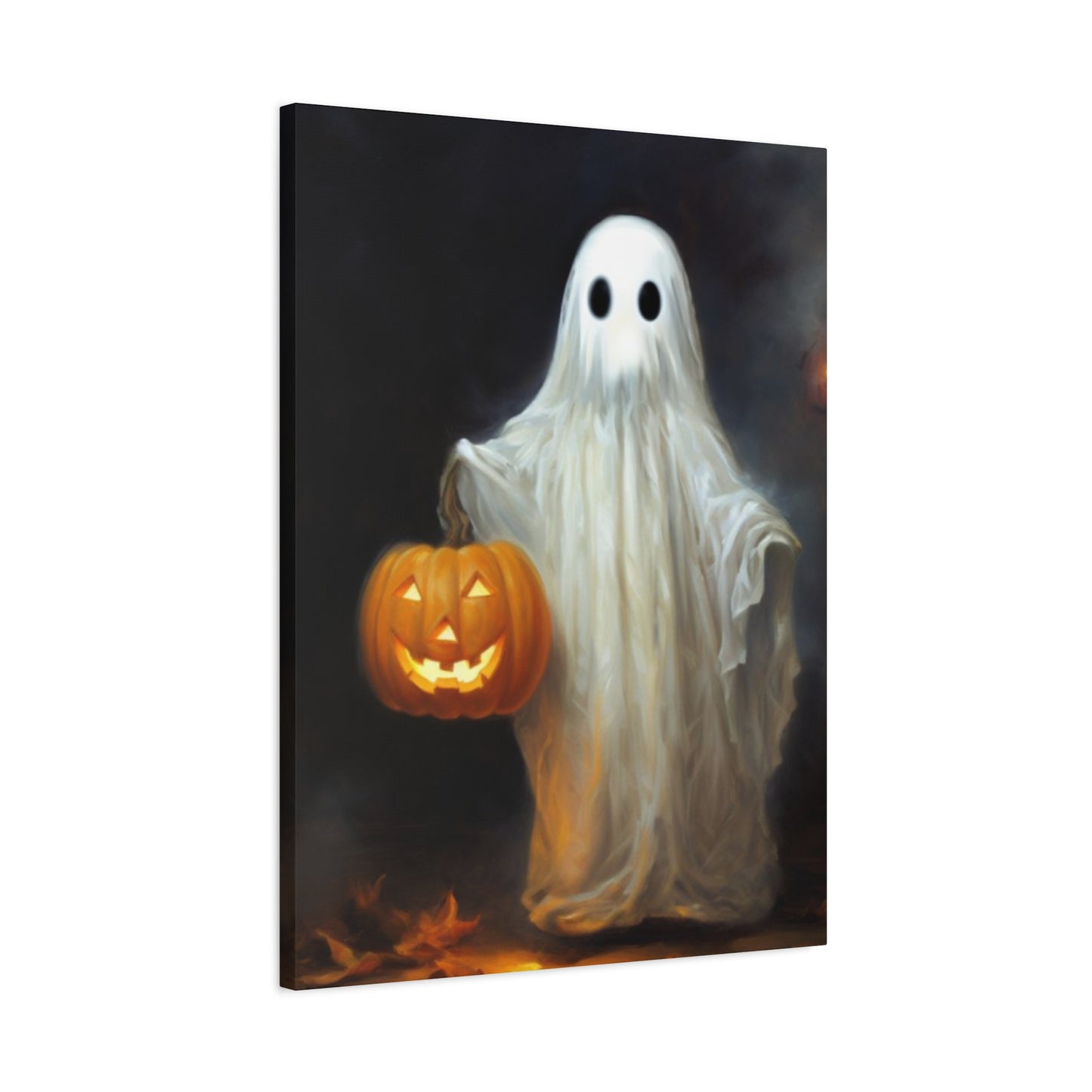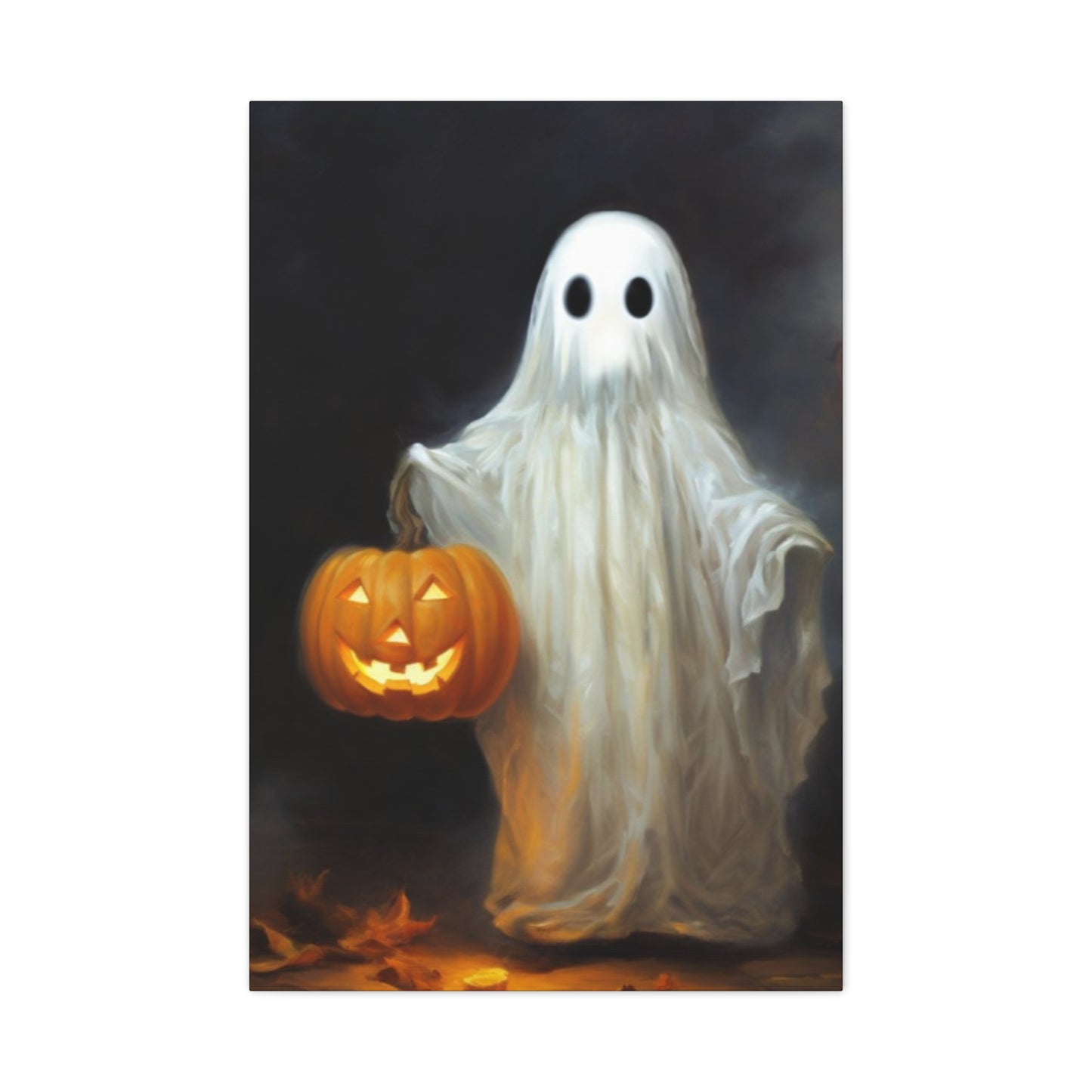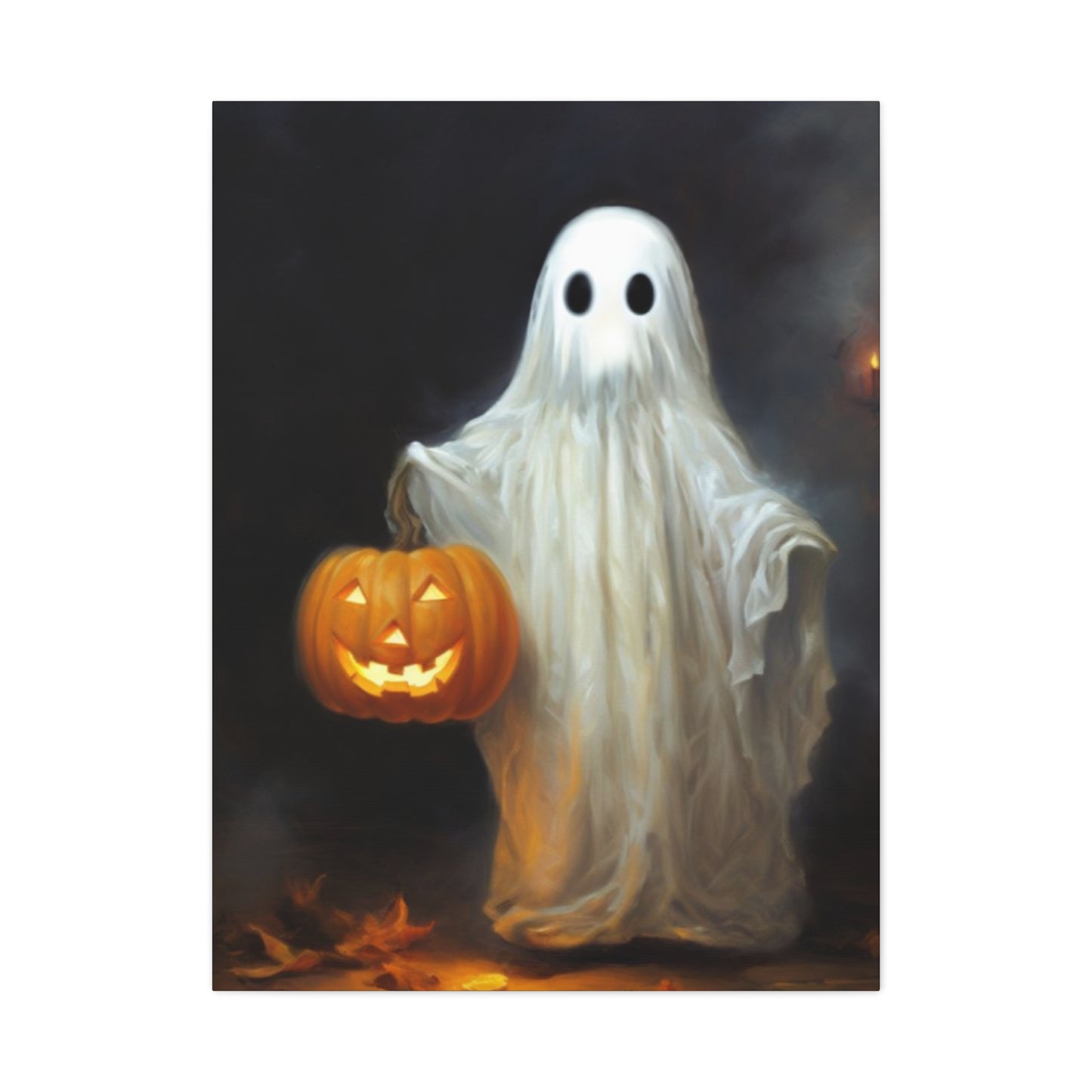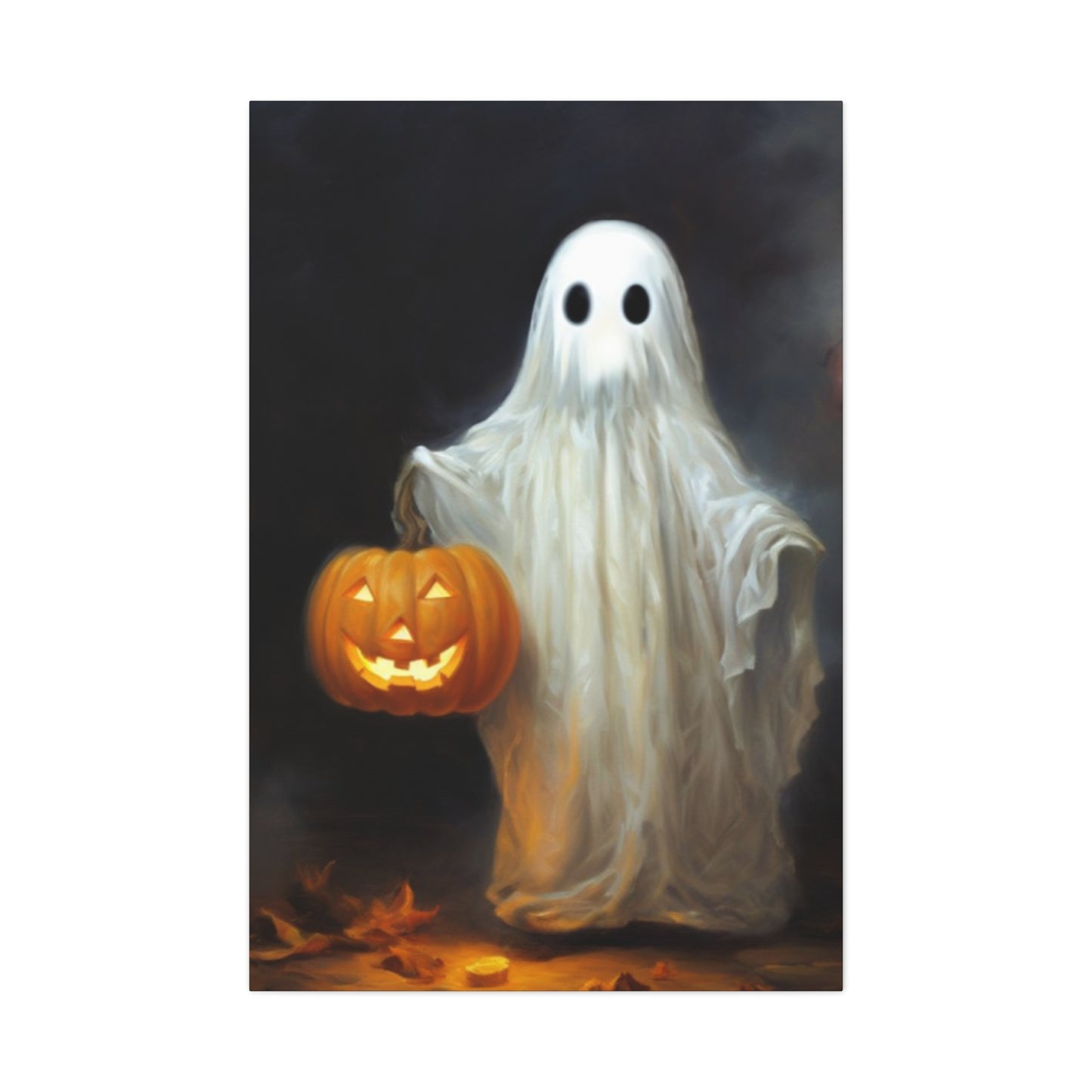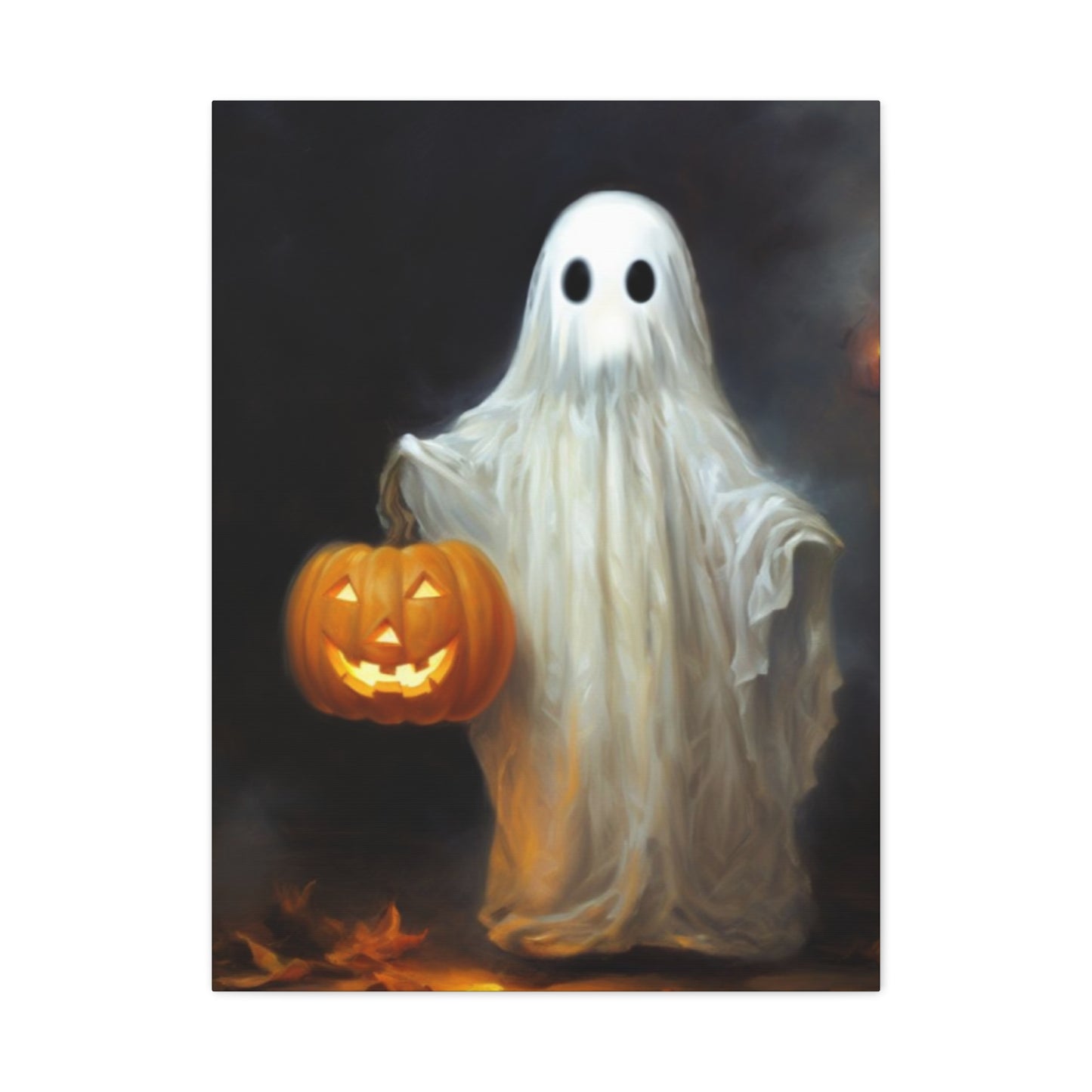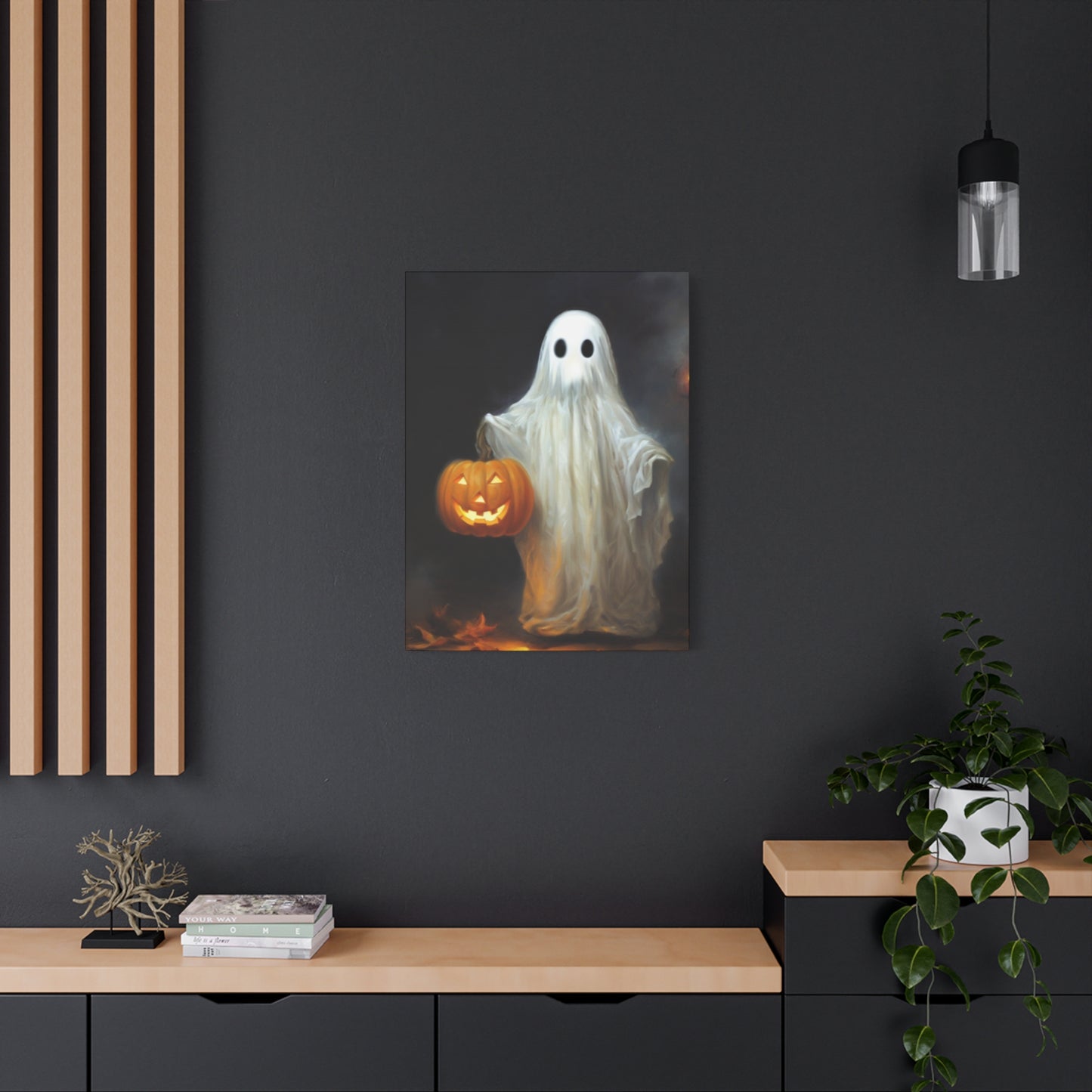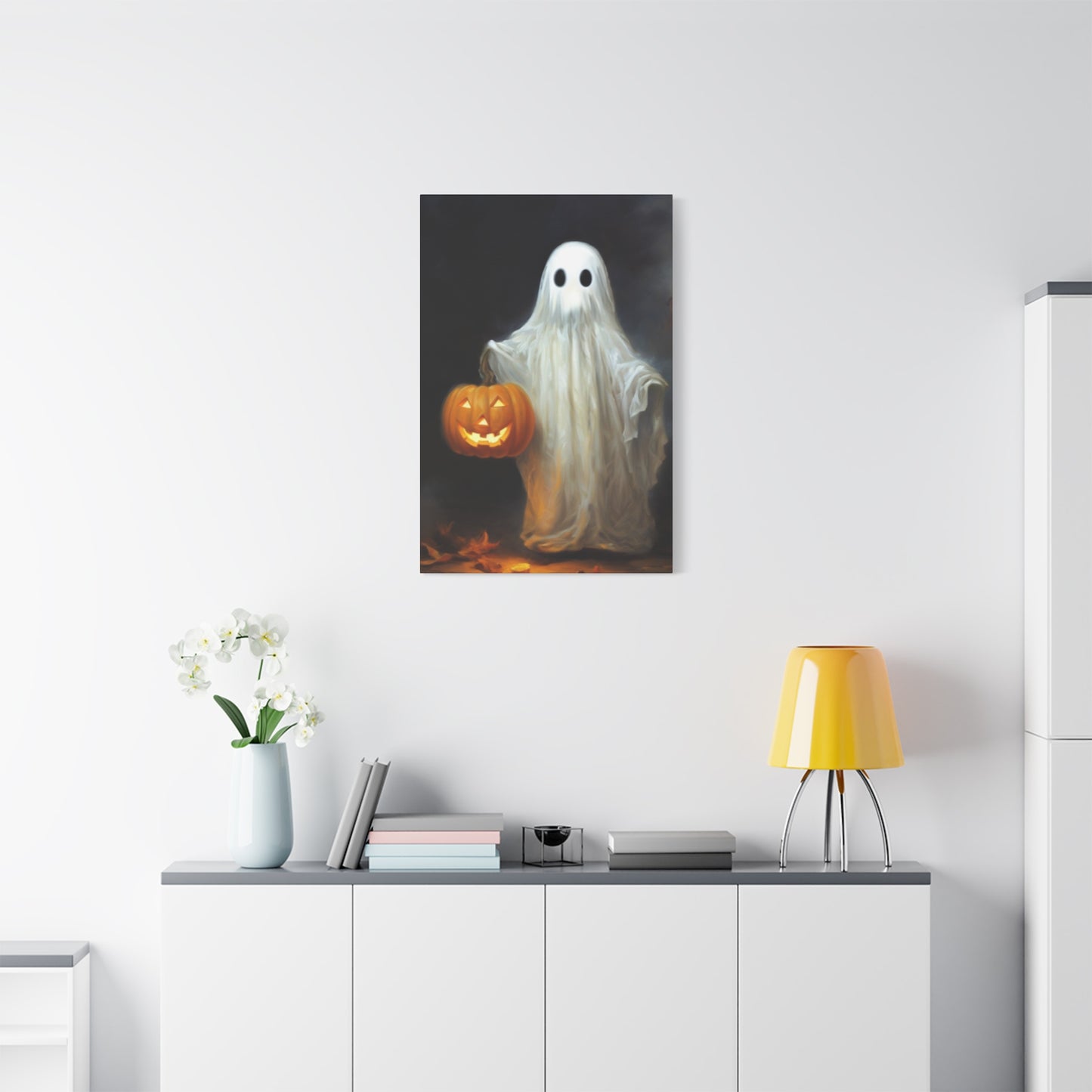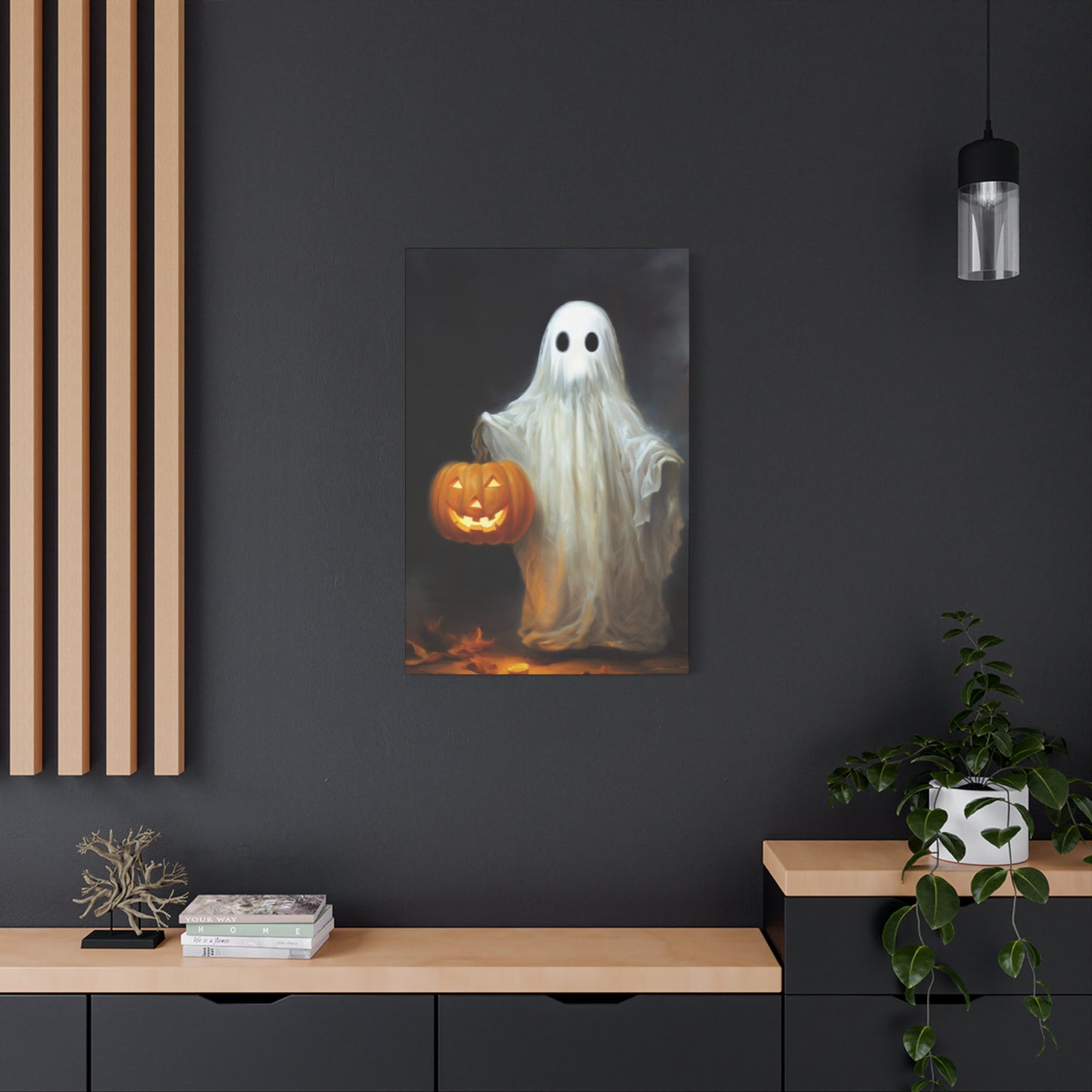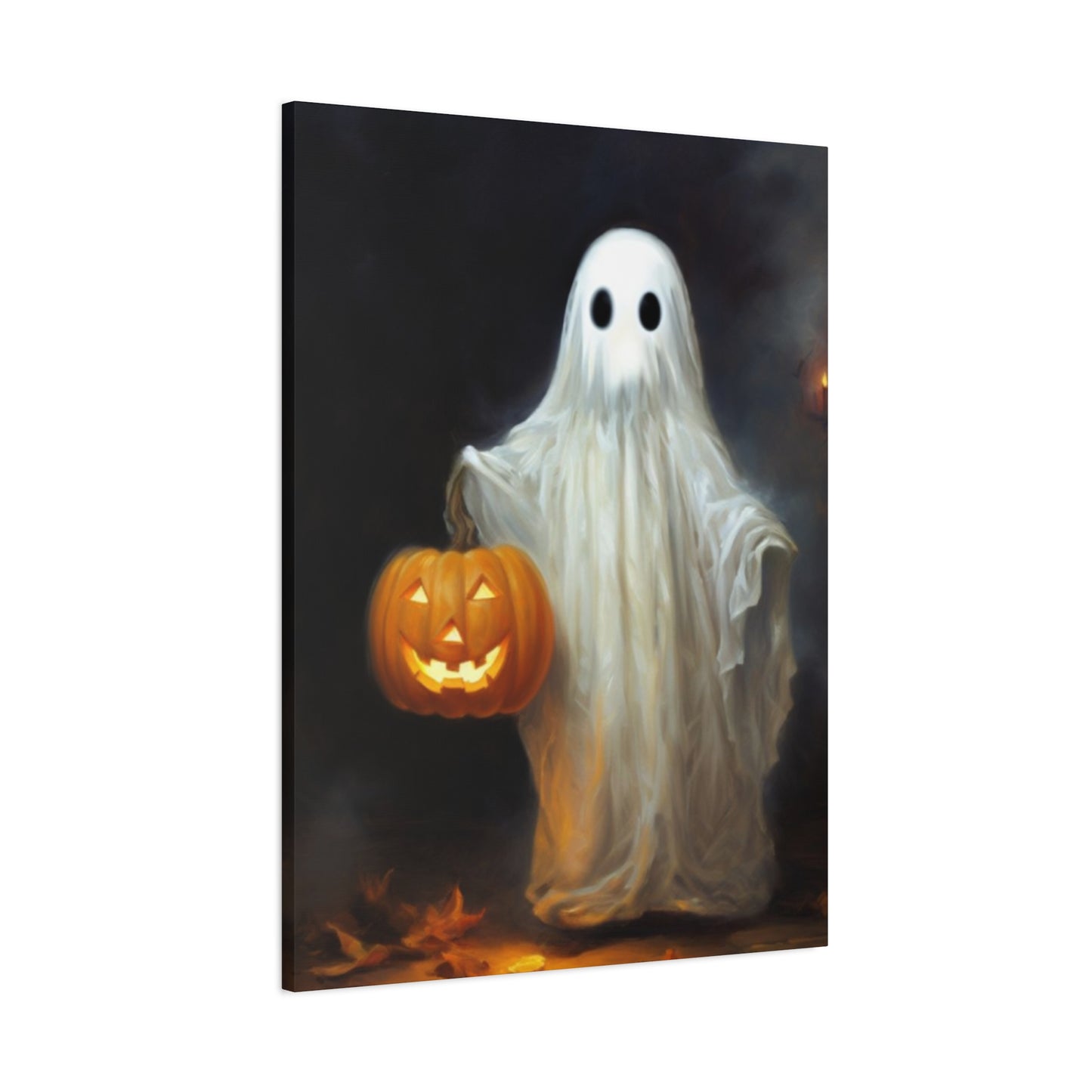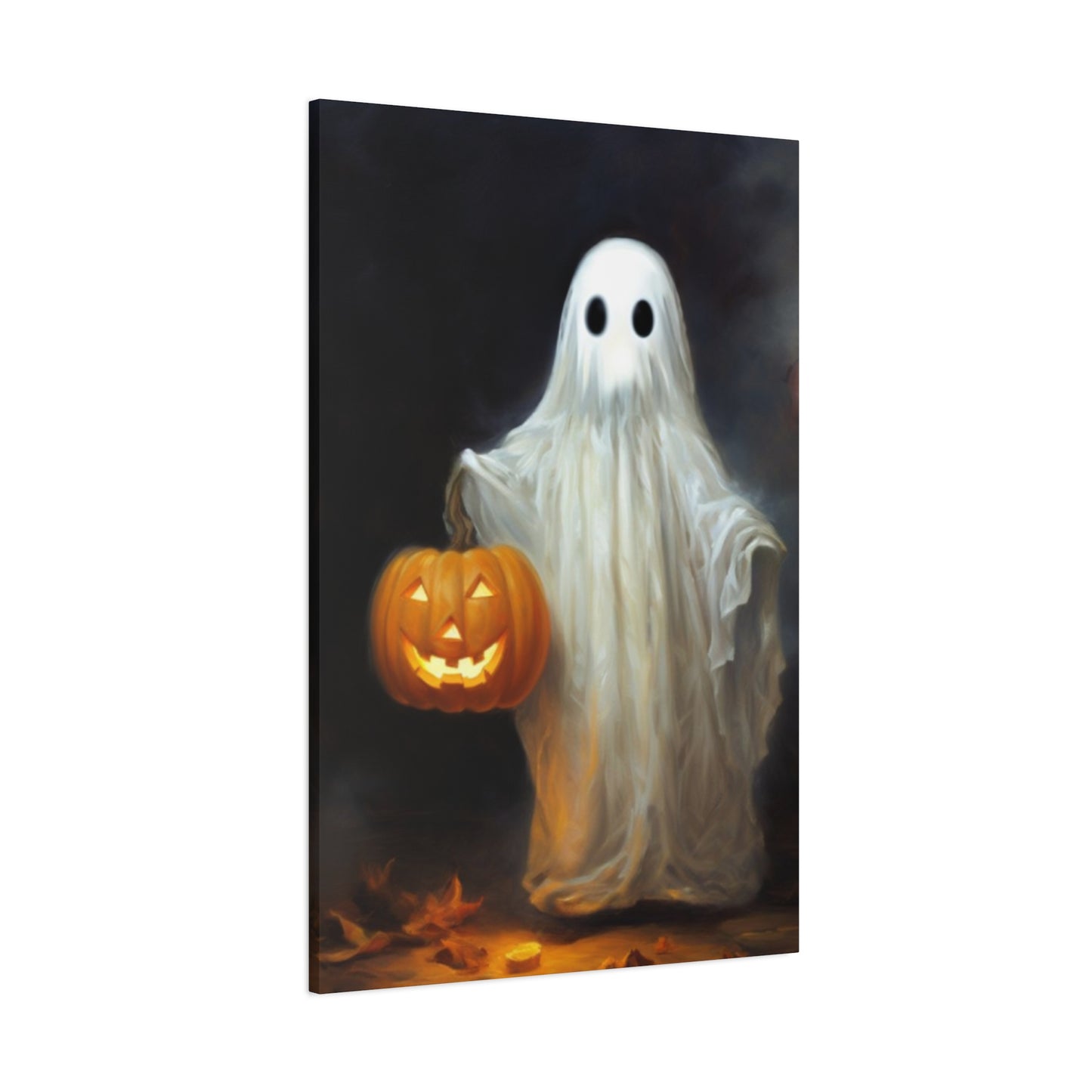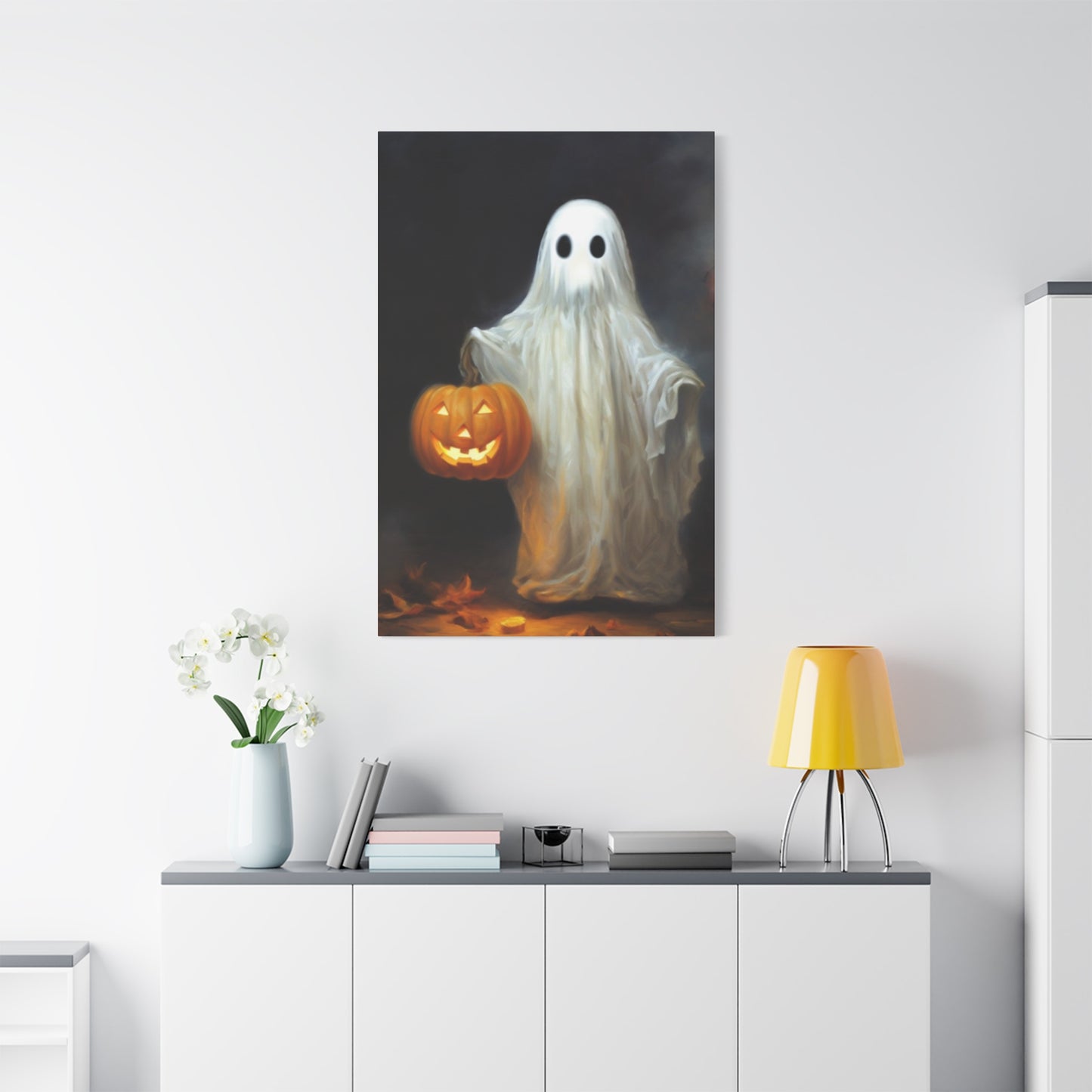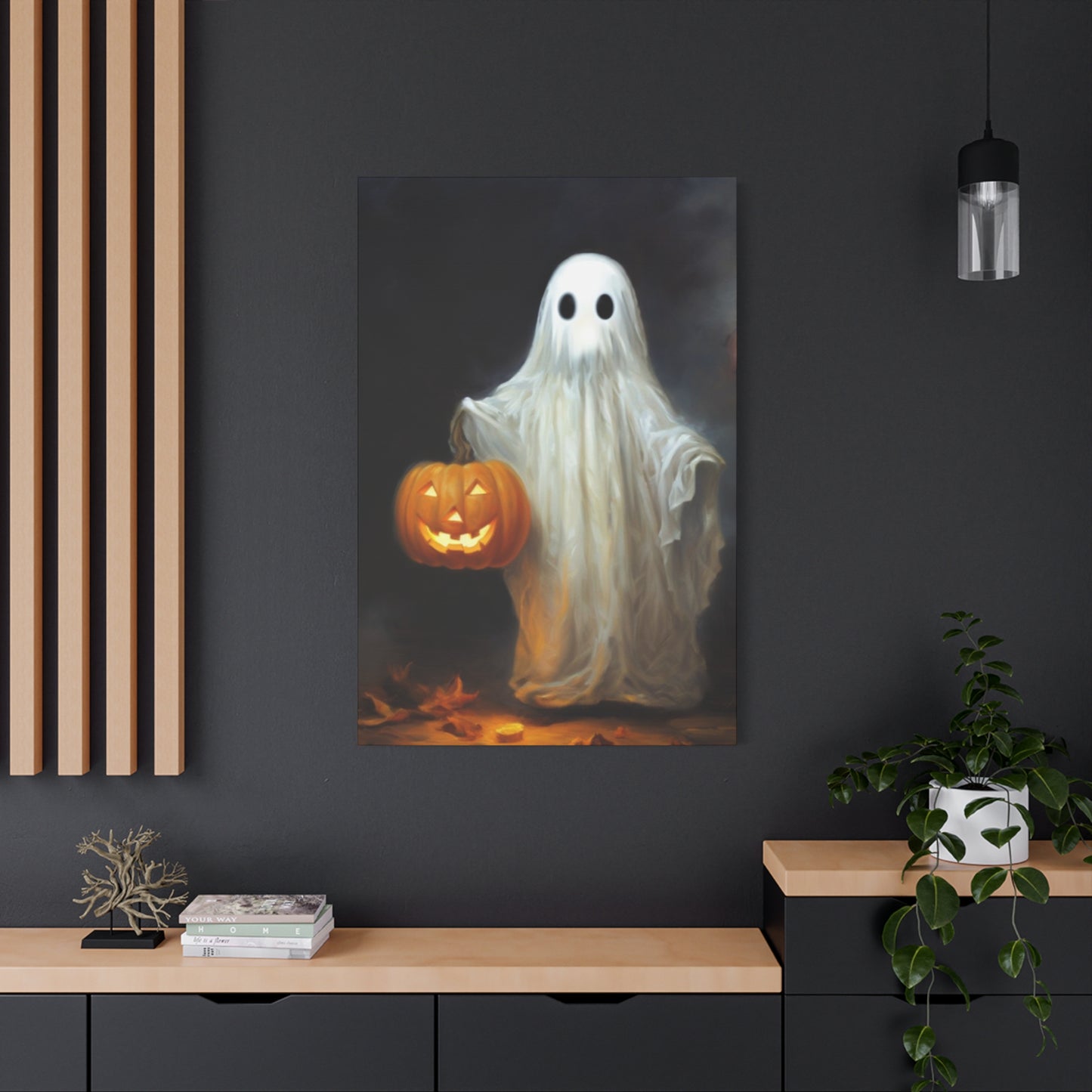Spooky & Stylish: Halloween Painting Wall Art Ideas to Enhance Your Seasonal Decor
As the autumn leaves begin to fall and the air turns crisp, there's a unique excitement that fills the atmosphere during the Halloween season. This enchanting time of year offers the perfect opportunity to refresh your living spaces with artwork that captures the essence of this beloved holiday. Whether you're drawn to the mysterious, the whimsical, or the downright frightening, incorporating seasonal canvas pieces into your home can create an immersive experience that resonates with the spirit of October's most celebrated occasion.
The beauty of Halloween-themed artwork lies in its incredible versatility. From vintage-inspired illustrations that evoke nostalgia to contemporary interpretations that push creative boundaries, there's an endless array of styles to explore. These pieces serve as more than mere decorations; they become conversation starters, mood setters, and expressions of personal taste that reflect your unique relationship with this fascinating holiday. The right artwork can transform an ordinary room into a captivating space that celebrates the magic, mystery, and merriment of the season.
Selecting the perfect canvas art for your Halloween display involves considering various factors, including your existing decor, the atmosphere you wish to create, and the emotions you want to evoke in those who enter your space. Some individuals prefer subtle nods to the season with muted color palettes and sophisticated imagery, while others embrace bold, vibrant pieces that make an unmistakable statement. The wonderful aspect of Halloween art is that there's truly something available for every aesthetic preference and decorating style.
Beyond aesthetics, Halloween canvas art offers practical benefits as well. Unlike temporary decorations that require assembly and storage, quality canvas pieces can be easily rotated throughout the year or displayed year-round if they complement your overall design scheme. Many contemporary Halloween artworks feature timeless elements that transcend seasonal boundaries, making them worthy investments for art lovers who appreciate darker aesthetics or gothic themes. The durability of canvas ensures that your chosen pieces will maintain their visual impact for many seasons to come.
The market for Halloween artwork has expanded dramatically in recent years, with artists from around the world contributing their unique visions to this growing genre. This proliferation of options means that collectors and casual decorators alike can find pieces that speak to their specific tastes, whether they're seeking traditional Jack-o'-lantern imagery, haunted house landscapes, vintage witch illustrations, or abstract interpretations of Halloween themes. The following sections will explore various categories and styles of Halloween canvas art, providing inspiration and guidance for those looking to enhance their seasonal displays with captivating visual elements.
Spooky Halloween Paintings to Haunt Your Walls
The term "spooky" encompasses a wide spectrum of visual elements that evoke feelings of unease, fascination, and delightful fear. Canvas paintings that fall into this category often feature shadowy figures, abandoned structures, twisted trees silhouetted against moonlit skies, and creatures that lurk just beyond the edge of perception. These artworks tap into our primal fears while simultaneously thrilling us with their artistic execution and imaginative composition.
When selecting spooky paintings for your walls, consider the level of intensity you want to achieve. Some pieces utilize subtle techniques, employing muted color schemes and suggestion rather than explicit imagery to create an atmosphere of creeping dread. These works often feature fog-shrouded landscapes, partially obscured figures, or architectural elements that hint at forgotten stories. The power of such pieces lies in what they leave to the imagination, allowing viewers to project their own fears and interpretations onto the canvas.
Alternatively, more direct approaches to spooky art feature clearly defined supernatural elements, such as spectral apparitions, skeletal figures, or menacing creatures emerging from darkness. These paintings make bold statements and serve as focal points in any room. Artists working in this style often employ dramatic lighting techniques, creating strong contrasts between light and shadow that enhance the eerie quality of their subjects. The interplay of illumination and darkness can transform a simple composition into something that seems to pulse with otherworldly energy.
The color palette chosen for spooky Halloween paintings significantly impacts their overall effect. Traditional choices include deep purples, midnight blues, charcoal grays, and rusty oranges that evoke autumn's changing leaves and harvest season. However, contemporary artists sometimes subvert expectations by introducing unexpected color combinations that create dissonance and amplify the unsettling nature of their work. A piece featuring sickly greens or unnatural reds can trigger visceral responses that purely traditional color schemes might not achieve.
Texture and technique also play crucial roles in creating truly spooky artwork. Some painters employ thick, impasto applications that give their work dimensional quality, making elements seem to leap from the canvas. Others favor smooth, almost photorealistic rendering that lends an uncanny quality to supernatural subjects, making the impossible appear disturbingly real. Brushwork can range from loose and expressive, suggesting chaotic energy and movement, to tight and controlled, heightening the precision of disturbing details.
Subject matter in spooky Halloween paintings often draws from centuries of folklore, literature, and cinematic traditions. Haunted mansions with broken windows and overgrown gardens, graveyards with tilting headstones and creeping mist, and dense forests where paths disappear into impenetrable darkness all serve as popular settings. These locations carry cultural weight and instantly communicate specific moods to viewers familiar with horror traditions. Artists who work within these familiar frameworks often add personal touches that make their interpretations distinctive and memorable.
The human figure, when present in spooky artwork, typically appears in distressed, mysterious, or threatening contexts. Silhouettes of figures standing in doorways or windows suggest stories we can only guess at, while more detailed representations might show individuals in period costumes, adding historical layers to the spooky narrative. Sometimes the absence of human figures proves more effective, with empty rooms and abandoned spaces implying recent departure or impending arrival, letting viewers' imaginations fill the void with their own anxieties.
Incorporating spooky Halloween paintings into your existing decor requires thoughtful placement. These pieces work exceptionally well in entryways, where they can set the tone for your entire Halloween display, greeting visitors with an immediate atmospheric shift. Hallways provide excellent locations for sequential arrangements that tell visual stories or create the sensation of walking through a haunted gallery. Living rooms and entertainment spaces benefit from larger statement pieces that anchor conversation areas and establish the room's mood.
Lighting considerations prove essential when displaying spooky artwork. The right illumination can enhance the mysterious qualities of these pieces, while poor lighting might diminish their impact. Many collectors install adjustable picture lights or strategically position lamps to create dramatic shadows and highlights that complement the painting's inherent drama. Some enthusiasts even use colored bulbs or smart lighting systems to modify the ambient light throughout the evening, creating different viewing experiences as natural light fades.
The frame selection for spooky Halloween paintings deserves careful consideration as well. Ornate frames with gothic details, such as carved flourishes or aged finishes, can enhance the historical or supernatural qualities of the artwork. Alternatively, sleek modern frames in black or deep gray create clean presentations that allow the painting itself to command full attention. Some collectors even opt for distressed or deliberately weathered frames that look as though they've hung in abandoned mansions for decades, adding an extra layer of authenticity to the overall presentation.
Bring the Spirit of Halloween Home
Creating a home environment that authentically captures the Halloween spirit extends beyond simply hanging decorations; it involves crafting an immersive experience that engages the senses and evokes specific emotional responses. Canvas art serves as a foundational element in this endeavor, providing permanent fixtures around which other decorative elements can be arranged. Unlike temporary adornments that come and go, carefully selected paintings become part of your home's character, ready to reemerge each season and contribute to your evolving Halloween traditions.
The spirit of Halloween encompasses numerous themes and emotions, from playful mischief to genuine terror, from nostalgic remembrance of childhood trick-or-treating to appreciation of autumn's natural beauty. Quality canvas art can capture any or all of these facets, serving as visual anchors that remind us why we cherish this particular season. A well-chosen piece might depict children in vintage costumes embarking on their evening adventures, immediately transporting viewers back to their own memories of Halloween past. Such artwork connects us to the holiday's traditions while maintaining relevance in contemporary settings.
Bringing Halloween's spirit home through artwork also means acknowledging the season's deeper cultural and historical roots. Many paintings reference harvest traditions, the thinning of veils between worlds, or ancient festivals that predate modern Halloween celebrations. These pieces add intellectual depth to decorative displays, offering viewers opportunities for contemplation beyond surface-level appreciation. Artwork that incorporates historical elements or symbolism creates talking points and educational moments, particularly valuable in homes with children who are learning about the holiday's rich heritage.
The emotional resonance of Halloween-themed canvas art varies depending on individual associations and experiences with the holiday. For some, Halloween represents freedom, creativity, and the socially sanctioned opportunity to explore alternate identities through costumes and play. Artwork that celebrates these aspects might feature theatrical elements, masked figures, or carnival-like atmospheres filled with energy and possibility. Such pieces radiate joy and excitement, reminding viewers of Halloween's role as a celebration of imagination and transformation.
Others connect more deeply with Halloween's contemplative dimensions, viewing the holiday as a time to remember departed loved ones and reflect on mortality and the passage of time. Canvas art addressing these themes often employs more somber palettes and thoughtful compositions, perhaps depicting peaceful cemetery scenes, memorial elements, or symbolic imagery related to remembrance and continuity. These works honor the holiday's more serious aspects while maintaining artistic beauty and emotional depth.
Practical considerations for bringing Halloween spirit home through canvas art include thinking about how pieces will integrate with your year-round decor. Some homeowners maintain dedicated Halloween galleries or collections that only appear during the autumn months, creating anticipated reveals that mark the season's arrival. Others prefer to select pieces with dual functionality, choosing artwork that reads as Halloween-themed during October but contains enough artistic merit and aesthetic appeal to remain displayed throughout the year without seeming out of place.
The scale of artwork significantly impacts its ability to convey Halloween spirit within a space. Large-scale pieces command attention and can dominate rooms, making them ideal for creating dramatic focal points that immediately communicate the season. These substantial works benefit from prominent placement where they can be appreciated from multiple angles and distances. Conversely, smaller pieces work beautifully when grouped in clusters or galleries, allowing for narrative development across multiple canvases and creating layered visual experiences.
Color theory plays a vital role in how effectively artwork captures Halloween spirit. Traditional orange and black combinations immediately signal the holiday, but sophisticated applications of these colors can elevate them beyond cliché. Burnt orange, rust, and amber tones evoke autumn's natural palette while maintaining seasonal relevance. Deep blacks provide sophisticated contrast and allow other colors to pop dramatically. When artists skillfully balance these signature hues with complementary or contrasting shades, the results feel both quintessentially Halloween and artistically accomplished.
Personal connection to artwork intensifies its ability to bring holiday spirit into your home. Pieces created by local artists, commissioned works that incorporate personal elements, or paintings discovered during memorable occasions carry emotional weight beyond their visual characteristics. These special acquisitions become part of your family's Halloween story, with their display marking the season as reliably as any calendar date. Over years and decades, such pieces accumulate meaning and memories, becoming treasured possessions that connect past celebrations with present ones.
Eerie and Artistic Halloween Wall Decor
The intersection of eeriness and artistic excellence produces Halloween wall decor that transcends typical seasonal decorations, offering pieces that challenge, intrigue, and reward sustained viewing. This category encompasses works that might appear in galleries year-round but carry particular resonance during the Halloween season. These sophisticated pieces appeal to collectors who appreciate technical skill, conceptual depth, and aesthetic innovation alongside atmospheric qualities that complement the holiday's themes.
Artistic merit in Halloween-themed work manifests through various elements, including composition, color harmony, brushwork, and conceptual sophistication. The most accomplished pieces demonstrate mastery of fundamental artistic principles while employing subject matter that aligns with Halloween traditions. A painting of a witch, for instance, becomes artistically significant when the artist brings fresh perspective to this familiar figure, perhaps exploring psychological dimensions, historical contexts, or formal qualities that elevate the work beyond simple illustration.
Eeriness in artistic contexts differs from simple scariness or creepiness. The eerie occupies a specific emotional territory characterized by uncertainty, strangeness, and the presence of something that shouldn't exist according to ordinary logic. Paintings that successfully capture eeriness often depict familiar settings or objects rendered somehow wrong or impossible. A house with too many windows, a figure with ambiguous features, or a landscape where perspective doesn't quite align can all generate eerie sensations that linger in viewers' minds long after they've looked away.
Contemporary artists working in Halloween-adjacent themes often draw inspiration from various art historical movements, creating pieces that reference surrealism, expressionism, romanticism, or gothic traditions while maintaining modern sensibilities. These intertextual works reward viewers familiar with art history by offering layers of meaning and visual quotations that enrich the viewing experience. A painting might echo Fuseli's nightmare imagery, reference Goya's dark paintings, or nod to German expressionist cinema while presenting original content relevant to contemporary Halloween celebrations.
The balance between artistic ambition and accessibility proves crucial for wall decor intended for residential settings. While gallery-oriented artwork might prioritize challenging viewers or exploring difficult concepts, pieces designed for home display generally need to function within daily life. The most successful Halloween wall art achieves sophistication without becoming oppressive or disturbing, maintaining enough lightness to coexist with everyday activities while providing depth for those who choose to engage more seriously with the work.
Medium and technique variations offer artists numerous avenues for creating eerie effects. Traditional oil painting allows for rich color depth and careful blending that can create atmospheric effects and subtle transitions. Acrylic techniques enable sharp edges and vivid colors that suit more graphic approaches. Mixed media work incorporating collage elements, texture additives, or unusual materials can introduce physical dimensionality that enhances eeriness through tactile qualities. Some contemporary artists even incorporate digital processes at various stages, combining traditional and modern methods to achieve specific effects.
Scale manipulation within compositions contributes significantly to eerie qualities in Halloween art. Figures rendered too large or too small for their settings create immediate dissonance that triggers unease. Architectural elements presented from impossible perspectives or with inconsistent internal logic similarly generate eerie sensations. Artists skilled in creating these effects understand how to suggest wrongness through subtle distortions that might not be immediately apparent but accumulate into distinct feelings of strangeness as viewers spend time with the work.
The narrative ambiguity present in many successful eerie paintings prevents easy interpretation, encouraging viewers to return repeatedly as they attempt to understand what they're seeing. A painting might suggest multiple possible stories without confirming any, or present visual information that seems contradictory. This openness to interpretation makes the artwork participatory rather than passive, inviting viewers to bring their own perspectives and imaginations to complete the piece's meaning. Such works often generate discussion as different viewers share their readings and observations.
Cultural references embedded in artistic Halloween decor can span centuries and continents, drawing from diverse folklore traditions, literary sources, and visual culture. A painting might reference Japanese yokai, European fairy tales, American folk legends, or contemporary urban mythology, sometimes combining elements from multiple traditions into new synthetic imagery. These cross-cultural works reflect Halloween's evolution as a holiday that now incorporates influences far beyond its Celtic and Christian origins, creating a rich visual vocabulary available to artists working in this genre.
The emotional palette of eerie artistic Halloween decor extends beyond simple fear or disgust to encompass wonder, melancholy, fascination, and even beauty. Many pieces in this category present subjects that are simultaneously disturbing and compelling, difficult to look at yet harder to look away from. This complexity reflects mature engagement with Halloween themes, acknowledging that the holiday's appeal lies partially in its permission to explore darker emotions and subjects within safe, controlled contexts where artistic framing provides necessary distance.
Halloween Paintings That Set the Mood
Mood-setting capability represents one of the most valuable functions of Halloween canvas art, with properly selected pieces capable of transforming entire spaces and influencing how people feel when they enter rooms. Unlike purely decorative elements that provide visual interest without deeper impact, mood-setting paintings operate on psychological levels, utilizing color, subject matter, composition, and atmosphere to create specific emotional environments that align with Halloween's various facets.
Understanding how paintings influence mood requires recognizing the psychological effects of visual elements. Warm colors generally energize and excite, while cool colors calm and sometimes unsettle. Dark values create intimacy and sometimes oppression, while lighter values open spaces and can suggest exposure or vulnerability. Artists creating Halloween paintings for mood-setting purposes carefully orchestrate these elements to produce desired effects, whether that's cozy autumn warmth, tense anticipation, playful spookiness, or genuine dread.
The mood you wish to establish should guide artwork selection. For family-friendly Halloween celebrations emphasizing fun and festivity, paintings featuring cheerful pumpkins, friendly ghosts, whimsical witches, and cartoon-style creatures set appropriate tones. These pieces communicate that your Halloween celebration prioritizes enjoyment and imagination over frightening anyone. They work particularly well in common areas, children's spaces, and anywhere you'll be hosting young trick-or-treaters or party guests who might be sensitive to scarier imagery.
Alternatively, if your Halloween aesthetic leans toward sophisticated gothic elegance, you'll want paintings that convey mystery, romance, and darker beauty. Think moody Victorian-era scenes, elegant vampiric figures, moonlit graveyards rendered with artistic sensitivity, or baroque-inspired compositions featuring decay and mortality treated as subjects for contemplation rather than shock. These pieces set moods of dramatic intensity while maintaining enough beauty and artistry to avoid becoming genuinely disturbing or tasteless.
For those hosting adult Halloween gatherings with horror themes, paintings can establish appropriately tense, unsettling moods that prime guests for scares and thrills. Artwork featuring psychological horror elements, such as distorted perspectives, nightmarish scenarios, or body horror, communicates that your celebration embraces intense experiences. When strategically placed, these pieces create anticipation and slight unease that enhances other Halloween elements like lighting, sound effects, and surprise scares throughout the evening.
Room-specific mood considerations should inform where different paintings are displayed. Entryways benefit from paintings that establish immediate tonal expectations for visitors. A welcoming, whimsical piece tells guests they're entering a fun, lighthearted celebration, while a more intense work signals a different kind of experience ahead. Living and entertainment spaces work well with paintings that sustain engagement over longer periods, offering enough visual interest to reward repeated viewing without becoming overwhelming during extended social gatherings.
Dining areas present unique opportunities for Halloween paintings to enhance shared experiences. Artwork visible during meals becomes part of the dining atmosphere, influencing conversation and overall experience. Slightly unsettling but not graphic pieces work well here, providing talking points without destroying appetites. Historical Halloween imagery, harvest themes, or folk art-style pieces often hit the right balance for dining contexts, being interesting and seasonally appropriate without being overly intense.
Bedroom spaces require careful consideration when displaying Halloween paintings, as these are personal sanctuaries where people begin and end their days. While some individuals enjoy dramatic or even frightening artwork in these intimate spaces, finding it energizing or comforting in its familiarity, others prefer bedrooms to remain neutral or calming regardless of season. If you do display Halloween paintings in bedrooms, consider pieces that lean toward atmospheric or beautiful rather than explicitly scary, maintaining the room's restful function while acknowledging the season.
Transitional spaces like hallways and staircases offer excellent opportunities for creating progressive mood shifts through sequential paintings. A series of pieces with gradually intensifying themes or colors can guide visitors through a narrative journey, with each painting building on the previous one's emotional impact. This technique proves especially effective for Halloween parties or haunted house experiences within residential settings, as it allows for sophisticated atmospheric development that mirrors cinematic pacing and structure.
Outdoor spaces, when protected from weather, can also benefit from mood-setting Halloween paintings. Covered porches, enclosed patios, and similar areas become extensions of indoor celebrations during Halloween season, and appropriate artwork helps unify these spaces with interior decor. Weather-resistant canvas prints or properly sealed paintings can withstand outdoor conditions while establishing mood for approaching trick-or-treaters or party guests before they even enter your home.
Bold and Creepy Canvas Art for Halloween
Boldness in Halloween canvas art manifests through decisive artistic choices that reject subtlety in favor of immediate, powerful impact. Bold pieces announce themselves unmistakably, utilizing strong contrasts, vivid colors, dramatic subjects, and compositions that command attention. When combined with genuinely creepy elements, these paintings create visceral reactions in viewers, producing the kind of memorable impressions that define successful Halloween displays and generate lasting impact.
Color intensity serves as perhaps the most immediate source of boldness in Halloween artwork. While subtle, muted palettes have their place, bold pieces embrace saturation and contrast, pairing intense oranges with deep purples, electric greens with blood reds, or stark whites with midnight blacks. These color combinations create visual excitement and ensure the artwork remains visible and impactful even in dimly lit Halloween environments. Artists working in bold styles understand how to push colors to their limits without crossing into garishness, maintaining aesthetic coherence even while pursuing maximum visual impact.
Subject matter in bold creepy artwork tends toward the explicit rather than suggested. Where subtle pieces might imply supernatural presence through environmental cues, bold works show ghosts, monsters, and creatures in full detail. These paintings don't ask viewers to imagine what lurks in shadows; they illuminate those shadows and display exactly what's there. This directness appeals to those who want their Halloween art to make unambiguous statements about their enthusiasm for the season and appreciation for horror aesthetics.
Compositional choices in bold Halloween canvas art often feature centralized subjects that dominate the picture plane, leaving little doubt about the painting's focus. A massive Jack-o'-lantern filling the frame, a looming werewolf rendered at imposing scale, or a close-up of a skull with meticulous detail all exemplify this approach. These compositions work particularly well as solo pieces rather than parts of galleries, functioning as standalone statements that need no accompanying works to achieve their intended effect.
The creepy aspects of bold artwork derive from specific visual elements that trigger instinctive discomfort responses. Asymmetry in faces or bodies, unnatural proportions, expressions that suggest malevolence or madness, and combinations of familiar and strange elements all contribute to creepiness. Artists skilled in generating these responses understand human psychology and visual processing, knowing exactly which features to distort or emphasize to produce maximum unease. A slight modification to eye size or spacing, for instance, can transform an otherwise normal face into something disturbing.
Texture and surface quality in bold creepy paintings can intensify their impact significantly. Heavy impasto application creates physical dimensionality that makes subjects seem to emerge from the canvas, while extremely smooth surfaces can lend an unsettling perfection to disturbing subjects. Some artists incorporate actual texture additives, creating rough, organic surfaces that beg to be touched despite the creepy imagery they depict. This tactile dimension adds another layer of engagement beyond pure visual appreciation.
Bold creepy artwork often draws inspiration from specific horror subgenres, each with distinct visual languages. Creature feature artwork emphasizes physical horror through detailed depictions of monsters and beasts, celebrating the artistry involved in designing convincing yet impossible beings. Psychological horror pieces might feature surreal imagery, distorted environments, or uncanny juxtaposition that create mental rather than physical discomfort. Gore and body horror styles embrace explicit depictions of physical trauma, appealing to audiences with strong stomachs and appreciation for special effects traditions.
The role of humor in bold creepy Halloween art deserves consideration, as many pieces successfully combine genuinely unsettling elements with playful or comedic touches. This balance prevents artwork from becoming oppressively dark while maintaining enough edge to remain interesting. A zombie rendered in bright, cheerful colors or a ghost engaged in mundane activities can be simultaneously creepy and amusing, creating complex emotional responses that reflect Halloween's dual nature as both frightening and fun.
Placement considerations for bold creepy canvas art require awareness of your audience and household dynamics. These pieces work best in spaces where their intensity won't create problems, such as dedicated entertainment areas, home theaters, or personal spaces belonging to horror enthusiasts. Avoid placing genuinely disturbing artwork where young children, sensitive individuals, or guests who haven't consented to intense imagery might encounter it unexpectedly. When hosting events, you might even implement temporary placement strategies, moving particularly bold pieces into more secluded areas during family-friendly gatherings and returning them to prominence for adults-only occasions.
Collecting bold creepy Halloween art often becomes a passionate pursuit for enthusiasts who appreciate the skill, creativity, and nerve required to create effectively disturbing imagery. Building a collection allows for rotation and variation, with different pieces featured each season or even throughout a single Halloween celebration. Limited edition prints, original works by favorite artists, and pieces associated with specific horror properties or cultural moments can accumulate significant value over time, both monetary and sentimental, as your collection becomes a personal archive of Halloween celebration and horror appreciation.
Perfect Wall Art for the Haunted Season
Perfection in Halloween wall art emerges from the intersection of personal taste, appropriate scale, thematic relevance, and quality execution. The perfect piece for one person's space might not suit another's, making the search for ideal Halloween artwork a deeply individual journey that requires self-awareness about your aesthetic preferences, the atmosphere you wish to create, and how different pieces interact with your existing decor and architectural features.
Seasonal perfection involves choosing pieces that feel completely appropriate for the Halloween period without appearing out of place or forced. The best Halloween wall art possesses an authenticity that suggests it naturally belongs in your space during autumn, contributing to the overall environment rather than merely decorating it. This authenticity can come from the artwork's subject matter, color palette, mood, or style, or some combination of these elements that creates harmonious integration with the season's essential character.
Size and scale considerations prove crucial when seeking perfect Halloween wall art. Pieces must be appropriately scaled for their intended locations, neither overwhelming spaces with excessive size nor disappearing due to insufficient presence. Measure your available wall space carefully before selecting artwork, considering not just the canvas dimensions but also how frames and matting will affect overall size. Leave adequate breathing room around pieces, allowing them to command attention without cramping adjacent elements or making rooms feel cluttered.
The concept of perfection also encompasses technical quality and craftsmanship. Canvas construction should be taut and properly stretched, with no sagging or distortion. Print reproduction, if applicable, should be sharp and color-accurate, with no banding, pixelation, or registration problems. Frame quality matters as well, with joints fitting precisely, hanging hardware installed securely, and finishes applied evenly. These quality considerations ensure your Halloween investment looks professional and maintains its appearance through many seasons of display and storage.
Thematic coherence contributes significantly to perfection in Halloween wall art selections. If you're building a collection or decorating an entire space, consider how different pieces relate to one another and to your overall vision. A cohesive Halloween display might explore various aspects of a single theme, such as different haunted locations, various supernatural creatures, or the evolution of Halloween traditions through different time periods. Alternatively, deliberate variety can work beautifully if pieces share common stylistic elements, color palettes, or emotional tones that unite them despite different subjects.
The perfect Halloween wall art speaks to your personal connection with the season. Perhaps you grew up in a region with spectacular autumn foliage, making fall landscape paintings particularly resonant. Maybe specific Halloween traditions like costume parties or haunted house visits hold special meaning, suggesting artwork that captures these experiences. Your cultural background, favorite horror films or literature, childhood memories, and current lifestyle all inform what makes particular pieces perfect for your space and celebration.
Investment considerations influence perfection as well, particularly regarding how pieces will be used and stored. Seasonal decor requires storage solutions that protect items during off-seasons, so consider whether you have appropriate space for carefully storing canvas art without damage. If storage is limited, you might prioritize pieces that work year-round or require minimal storage volume. Budget also factors into perfection, as the ideal piece should feel worth its cost based on the pleasure and use you'll derive from it over time.
Versatility enhances the perfection of Halloween wall art, particularly if you enjoy refreshing your decor or hosting various types of seasonal gatherings. Pieces that work in multiple configurations or locations provide more decorating options and better value. A triptych that can be displayed together or separated, paintings with orientation flexibility, or works that complement various color schemes all offer enhanced versatility that extends their usefulness across different seasons and decorating schemes.
Emotional resonance separates merely adequate Halloween art from pieces that feel perfect for your space. When you discover artwork that elicits genuine emotional response, whether that's excitement, nostalgia, curiosity, or delighted fright, you've likely found something special. These emotional connections deepen over time as pieces accumulate memories and associations, eventually becoming inseparable from your Halloween traditions and identity as a holiday enthusiast.
The search for perfect Halloween wall art is rarely a single transaction but rather an ongoing journey that evolves as your taste develops, living situations change, and new artistic directions emerge. Remaining open to discovery while maintaining clear vision about your preferences and needs helps you identify perfect pieces when you encounter them, whether that's in traditional galleries, online marketplaces, artist studios, or unexpected venues where Halloween-themed art might appear.
Ghosts, Ghouls, and Pumpkins on Canvas
The classic triumvirate of ghosts, ghouls, and pumpkins represents Halloween's most iconic imagery, appearing in countless artistic interpretations across centuries of celebration. Canvas paintings featuring these subjects tap into deep cultural recognition and instant seasonal association, making them reliable choices for anyone seeking immediately identifiable Halloween decor. Despite their ubiquity, skilled artists continue finding fresh approaches to these traditional subjects, demonstrating that familiarity need not preclude creativity or artistic merit.
Ghost imagery in canvas art spans incredible stylistic diversity, from ethereal, barely-there wisps of ectoplasm to sheet-wearing traditional apparitions to photorealistic renderings of transparent figures. Each approach creates different emotional responses and suits different decorative contexts. Whimsical cartoon ghosts with friendly expressions work beautifully in family settings, communicating Halloween's playful aspects while avoiding genuine frightening content. More sophisticated ghost paintings might explore translucency, lighting effects, and atmospheric conditions, creating artwork that succeeds as technical achievement alongside seasonal appropriateness.
Historical ghost depictions offer particularly rich territory for canvas art, drawing from centuries of spiritualist traditions, folklore, and cultural beliefs about the afterlife. Victorian-era inspired ghost paintings, with their sepia tones and period details, evoke specific historical moments when death and mourning played more visible roles in daily life. These pieces often incorporate authentic details from spiritualism's heyday, including references to séances, spirit photography, and mourning traditions that modern viewers find both fascinating and appropriately eerie.
Ghouls present artists with opportunities to explore grotesque, horror-focused imagery that pushes beyond ghosts' often gentler presentation. The term encompasses various undead creatures, including zombies, revenants, and corpse-like beings that exist in liminal states between life and death. Canvas paintings of ghouls tend toward darker palettes and more explicit body horror, with decaying flesh, exposed bones, and other signs of physical deterioration rendered in varying degrees of detail depending on intended audience and artistic approach.
The artistic challenge in depicting ghouls lies in balancing realism and stylization to create effectively disturbing imagery that remains artistically valid rather than merely shocking. Technical skill in rendering anatomy, understanding how decay processes affect appearance, and creating convincing textures all contribute to successful ghoul paintings. The best examples demonstrate mastery of figurative art fundamentals while pushing subject matter into horrific territories, resulting in pieces that impress aesthetically even while unsettling viewers.
Pumpkin imagery offers perhaps the most diverse artistic possibilities among this trio, ranging from realistic harvest still lifes to abstracted shapes to intricately carved Jack-o'-lanterns with elaborate expressions. The humble pumpkin serves as both autumn agricultural symbol and Halloween's most recognizable emblem, making it appropriate for contexts ranging from elegant fall decor to explicit horror displays. Artists working with pumpkin subjects can emphasize different aspects depending on their vision: natural beauty and harvest abundance, transformation through carving into something new, or the strange, almost alien quality of a vegetable transformed into a face.
Jack-o'-lantern paintings specifically capture the magic of this Halloween tradition, depicting glowing faces in endless variations. Some artists focus on traditional triangular features and simple expressions, celebrating the iconic simplicity that makes Jack-o'-lanterns universally recognizable. Others showcase elaborate carvings with complex designs, dramatic lighting, and atmospheric settings that elevate the subject beyond simple holiday decoration. The interplay between inner light and surrounding darkness in Jack-o'-lantern paintings offers artists wonderful opportunities to demonstrate skill with chiaroscuro and dramatic illumination.
Combining ghosts, ghouls, and pumpkins within single compositions creates opportunities for narrative complexity and visual interest. A painting might show ghosts emerging from a pumpkin patch, ghouls surrounding a bonfire of Jack-o'-lanterns, or all three elements integrated into a Halloween celebration scene. These complex compositions allow artists to create small worlds within their canvases, giving viewers multiple focal points and details to discover through repeated viewing. The best examples balance composition carefully, ensuring no single element overwhelms others unless that imbalance serves specific artistic purposes.
Stylistic approaches to painting these classic subjects vary enormously, from photorealistic renderings that could almost be photographs to impressionistic interpretations that capture essence through color and brushwork rather than detail. Expressionist approaches emphasize emotional content over accurate representation, resulting in ghosts, ghouls, and pumpkins that communicate feelings of fear, excitement, or mystery through distorted forms and intense colors. Folk art styles bring naive charm and cultural specificity, often incorporating traditional decorative elements and flattened perspectives that create accessible, warmly appealing artwork.
Contemporary artists sometimes subvert expectations around these traditional subjects, presenting them in unexpected contexts or with ironic distance. A photorealistic painting of a discarded Halloween pumpkin rotting on a curb comments on consumerism and celebration's ephemeral nature. Ghosts rendered in bright, cheerful colors challenge assumptions about supernatural imagery requiring darkness and gloom. These conceptual approaches appeal to viewers seeking Halloween art that engages intellectually alongside providing seasonal decor, offering talking points and deeper meanings beyond surface appeal.
Celebrate Halloween with Stunning Paintings
Celebration-focused Halloween paintings capture the holiday's joyful, festive dimensions rather than emphasizing fear or darkness. These pieces reflect Halloween as an occasion for community gathering, creative expression, childhood wonder, and seasonal enjoyment. Artwork in this category tends toward brighter palettes, dynamic compositions suggesting movement and activity, and subject matter highlighting traditions like costume-wearing, trick-or-treating, parties, and decoration displays that make Halloween special for millions of participants worldwide.
The energy present in celebration-oriented artwork distinguishes it from more atmospheric or horror-focused pieces. These paintings often feature multiple figures engaged in activities, with composition and color choices creating senses of excitement and momentum. A canvas showing costumed children rushing down a lamp-lit street, party guests dancing in decorated spaces, or families carving pumpkins together communicates Halloween's social dimensions and the joy people find in shared seasonal traditions.
Nostalgia plays a significant role in many celebration-themed Halloween paintings, particularly those depicting past eras when holiday traditions differed from contemporary practices. Vintage-style artwork showing 1950s trick-or-treaters in handmade costumes, 1970s Halloween parties with specific period decor, or even Victorian-era Halloween gatherings provides windows into how the holiday has evolved while connecting current celebrations to longer traditions. These historically-informed pieces appeal to collectors who appreciate Halloween's cultural history alongside its present-day manifestations.
Color palettes in celebration-focused paintings typically embrace Halloween's traditional orange and black while often incorporating additional hues that increase visual variety and prevent monotony. Warm autumn tones including gold, rust, and amber create cozy atmospheres appropriate for harvest-season celebrations. Pops of purple, green, and red add fantasy elements without overwhelming the essential Halloween color scheme. The overall effect should feel abundant and festive, reflecting the excitement and sensory richness that characterize successful Halloween celebrations.
Conclusion
Halloween offers a unique opportunity to blend creativity with seasonal celebration, and one of the best ways to elevate your festive atmosphere is through painting wall art. Whether you prefer spooky, eerie vibes or a more stylish and chic aesthetic, Halloween-themed paintings can instantly transform any space into a hauntingly beautiful haven. This season, embracing wall art that speaks to your personal style can make all the difference in how your decor feels—whether it’s bold and dramatic or subtly whimsical.
Spooky painting ideas like ghostly silhouettes, haunted houses, or eerie forests capture the essence of Halloween’s mysterious allure. These motifs create an immersive environment that enchants and excites guests, making your home the go-to destination for seasonal gatherings. The key is to balance spookiness with style so your decor doesn’t overwhelm but rather complements your existing space. Incorporating darker palettes with pops of vibrant oranges, purples, and greens keeps the atmosphere lively while preserving the Halloween spirit.
On the other hand, stylish Halloween art leans into modern design trends—think minimalist pumpkins, elegant witches, or abstract interpretations of classic symbols. These pieces add sophistication to your seasonal setup, making Halloween decor feel intentional and refined. By choosing artwork that harmonizes with your home’s overall aesthetic, you ensure that your holiday decorations can stay up longer and remain appealing beyond just the spooky season.
One of the great advantages of wall art is its versatility. Paintings can be easily swapped out or layered with other decorations to refresh your space year after year. You can personalize your Halloween art by experimenting with different mediums—from acrylics and watercolors to mixed media—and by adding texture with brushstrokes or metallic finishes. This flexibility allows you to continuously express your creativity and keep your decor feeling fresh and unique.
Moreover, painting your own Halloween wall art offers a fun, hands-on way to engage with the season. Crafting your pieces adds sentimental value and a personal touch that store-bought decorations often lack. Whether you are a seasoned artist or a beginner, the process of creating spooky or stylish Halloween art can be both relaxing and rewarding, making your space truly one-of-a-kind.
In summary, Halloween painting wall art is a fantastic way to boost your seasonal decor with personality and flair. By combining spooky themes with stylish execution, you can create an inviting, festive environment that reflects both the playful and eerie spirit of the holiday. So, this Halloween, consider embracing painting wall art as a key element of your decoration strategy—transform your walls into a canvas of creativity, and watch your seasonal decor come to life with haunting charm and artistic elegance.

















